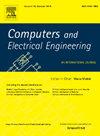Feature fusion based automatic chord recognition model: BTC-FDAA-FGF
IF 4
3区 计算机科学
Q1 COMPUTER SCIENCE, HARDWARE & ARCHITECTURE
引用次数: 0
Abstract
Automatic chord recognition is a significant topic in the field of Music Information Retrieval (MIR). This paper introduces a novel feature fusion method combining Hybrid Constant-Q Transform (HCQT) and adaptive attention for chord detection, especially with a focus on improving the accuracy of chord detection of rare chord classes. Serving as one of the cornerstone features of music, the chords obtained by chord recognition algorithms are the basis of many high-level semantic tasks. At present, a severe class imbalance problem exists in the domain of automatic chord recognition. The recognition accuracy of rare chords is much lower than that of common chords, which significantly affect the overall performance of chord recognition algorithms. In this paper, a chord recognition algorithm based on feature fusion is proposed. First, in the feature extraction part, Hybrid Constant-Q Transform (HCQT) is introduced to assist with Constant-Q Transform(CQT) to obtain richer and finer musical signal features, enabling better tracking of overtones. Next, in the chord estimation part, the frequency-domain adaptive attention (FDAA) mechanism is used to enhance feature saliency, ensuring that the network can adaptively adjust the weights for different frequency components when training. Thereby frequency-domain features that contain important information can be selectively enhanced. The enhanced features are then fed into an aggregation module that integrates a bidirectional self-attention module and Fourier transform module, enabling more effective capture of fine-grained features, global context information, and periodic structures in chords. The experimental result shows that proposed algorithm outperforms existing mainstream baseline methods by 1.2% to 2.2% on the MIREX metrics, validating the effectiveness of the algorithm.
基于特征融合的自动和弦识别模型:btc - fda - fgf
和弦自动识别是音乐信息检索(MIR)领域的一个重要课题。本文提出了一种结合混合常数q变换(HCQT)和自适应关注的和弦检测新方法,着重提高了对稀有和弦类的和弦检测准确率。和弦作为音乐的基石特征之一,由和弦识别算法获得的和弦是许多高级语义任务的基础。目前,在和弦自动识别领域存在着严重的类不平衡问题。稀有和弦的识别准确率远低于普通和弦,这对和弦识别算法的整体性能有显著影响。提出了一种基于特征融合的和弦识别算法。首先,在特征提取部分,引入混合恒q变换(HCQT),辅助恒q变换(CQT)获得更丰富、更精细的音乐信号特征,更好地跟踪泛音。其次,在弦估计部分,利用频域自适应注意(FDAA)机制增强特征显著性,保证网络在训练时能够自适应调整不同频率分量的权值。因此,可以选择性地增强包含重要信息的频域特征。然后将增强的特征输入到集成了双向自关注模块和傅里叶变换模块的聚合模块中,从而能够更有效地捕获细粒度特征、全局上下文信息和和弦中的周期性结构。实验结果表明,该算法在MIREX指标上优于现有主流基线方法1.2% ~ 2.2%,验证了算法的有效性。
本文章由计算机程序翻译,如有差异,请以英文原文为准。
求助全文
约1分钟内获得全文
求助全文
来源期刊

Computers & Electrical Engineering
工程技术-工程:电子与电气
CiteScore
9.20
自引率
7.00%
发文量
661
审稿时长
47 days
期刊介绍:
The impact of computers has nowhere been more revolutionary than in electrical engineering. The design, analysis, and operation of electrical and electronic systems are now dominated by computers, a transformation that has been motivated by the natural ease of interface between computers and electrical systems, and the promise of spectacular improvements in speed and efficiency.
Published since 1973, Computers & Electrical Engineering provides rapid publication of topical research into the integration of computer technology and computational techniques with electrical and electronic systems. The journal publishes papers featuring novel implementations of computers and computational techniques in areas like signal and image processing, high-performance computing, parallel processing, and communications. Special attention will be paid to papers describing innovative architectures, algorithms, and software tools.
 求助内容:
求助内容: 应助结果提醒方式:
应助结果提醒方式:


